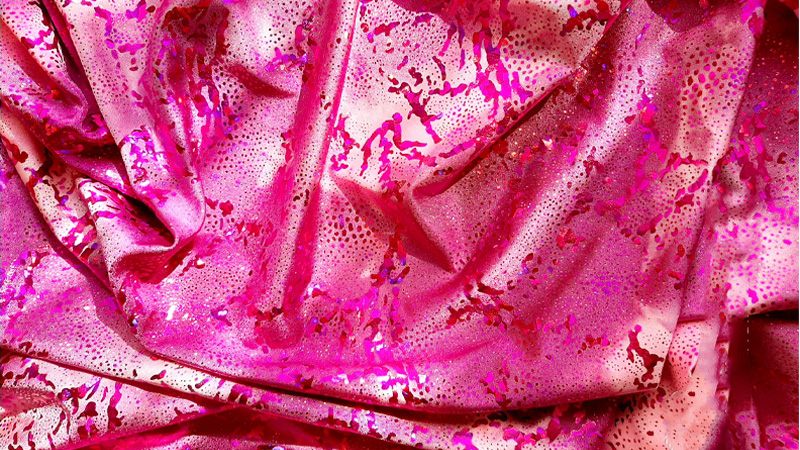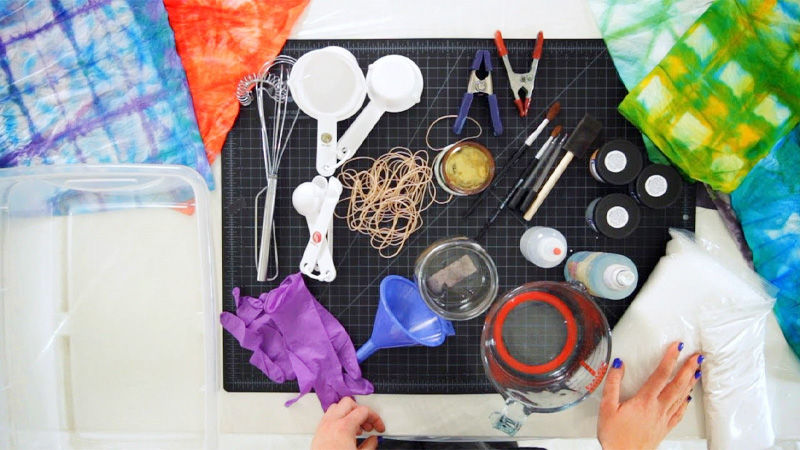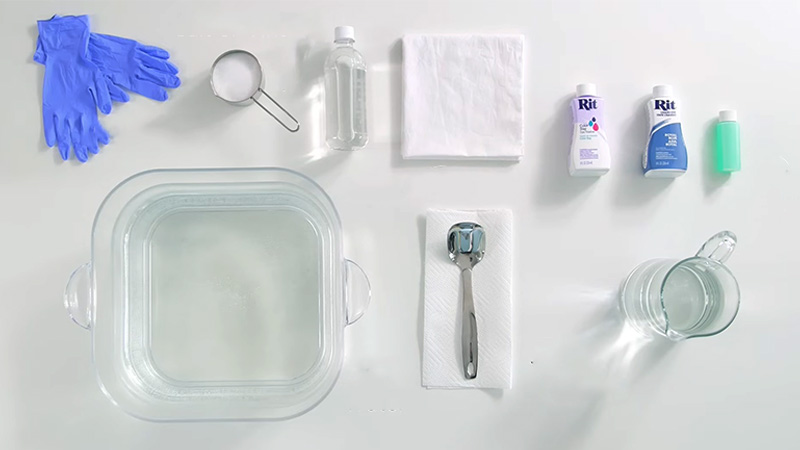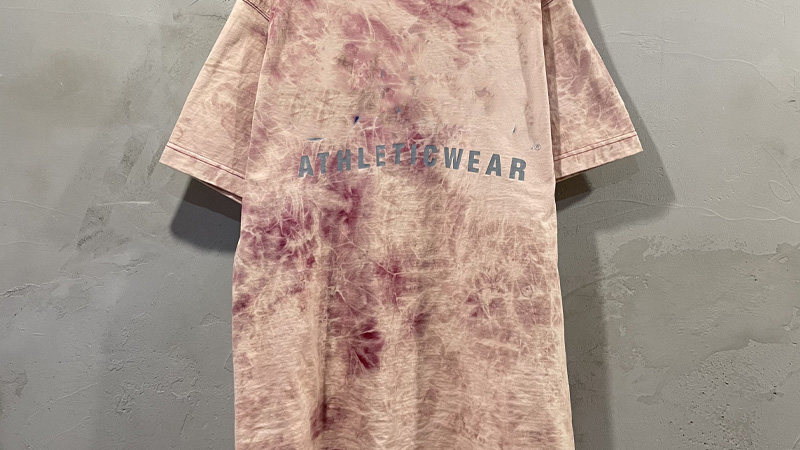Tie-dyeing is an artistic and expressive way to breathe new life into fabrics, creating vibrant patterns and colors that make each piece unique.
While tie-dyeing is often associated with natural fibers like cotton, many wonder, “Can you tie-dye nylon?” The answer is yes, but it comes with its considerations and techniques.
Nylon, a synthetic fabric, responds differently to dyes than natural fibers. Its smooth, non-absorbent surface requires specific dye types and application methods to achieve desired results.
This guide will explore the world of tie-dyeing on nylon, delving into the materials, methods, and precautions necessary to embark on this creative journey.
From choosing suitable dyes to mastering various tying techniques, we’ll provide insights into the art of tie-dyeing nylon and how to transform plain nylon garments or fabrics into vibrant, personalized creations.

Can You Tie-Dye Nylon?
Tie-dyeing nylon can be a fun and creative project, but it requires specific methods and materials due to the unique properties of this synthetic fabric. Here are the simple methods:
Acid Dye Technique
Nylon responds well to acid dyes designed explicitly for synthetic fabrics. Following the manufacturer’s instructions, prepare a dye bath with acid dye and immerse the nylon item.
Tie-Dye Kit for Synthetics
Some companies offer tie-dye kits specifically designed for synthetic fabrics like nylon. These kits typically include the necessary dyes and instructions tailored for nylon.
Rit Dyemore for Synthetics
Rit Dyemore is a popular dye specially formulated for synthetic fabrics. Follow the instructions on the package to create vibrant tie-dye designs on nylon.
Heat-Set Dyeing
Heat-set dyes designed for synthetic materials can be used on nylon. After applying the dye, heat-set it using an iron or a heat press to ensure colorfastness.
Cold-Water Dyeing
Some acid dyes can be used with cold-water dyeing techniques. Mix the dye with water, apply it to the nylon, and let it sit for an extended period to allow the color to set.
Tie-Dye Paints
Fabric paints specifically made for nylon can be used to create tie-dye effects. Apply the paint to the fabric, and use brushes, sponges, or other tools to create your desired patterns.
iDye Poly Dyeing Packets
iDye Poly is a product designed for synthetic fabrics, including nylon. These dyeing packets are easy to use and offer a range of colors for your tie-dye projects.
Always follow the instructions for the chosen dye or dyeing method, as different products may have specific requirements.
When done correctly, nylon tie-dyeing can be a rewarding creative endeavor, so take your time and enjoy the process.
Materials Needed To Tie-Dye Nylon?

Tie-dyeing nylon requires specific materials to achieve vibrant and long-lasting results on this synthetic fabric. Here are the essential materials:
Acid Dye or Synthetic Fabric Dye
Acid dyes or synthetic fabric dyes are specially formulated for nylon. They provide strong color retention and vibrant results. Choose a variety of colors based on your tie-dye design preferences.
Nylon Fabric
You’ll need nylon fabric or nylon-based clothing items to tie dye. Nylon’s smooth texture and synthetic composition allow it to absorb dye effectively.
Plastic Bottles or Squeeze Bottles
Plastic or squeeze bottles with applicator tips help mix and apply the dye to create intricate tie-dye patterns on the nylon.
Rubber Bands or String
Rubber bands or strings are essential for binding and creating patterns on the fabric. They help you achieve the classic tie-dye look by blocking penetration in specific areas.
Plastic Wrap or Ziplock Bags
Plastic wrap or sealable plastic bags are handy for enclosing the tie-dyed nylon item during curing, which helps set the dye and intensify the colors.
Protective Gear
Wear gloves and an apron or old clothing to protect your skin and clothes from dye splatters. Safety glasses can also be helpful to shield your eyes.
Bucket or Sink
You’ll need a container, such as a bucket or sink, to mix and apply the dye. Ensure it’s large enough to accommodate the fabric and allow thorough saturation.
These materials are readily available at craft stores or online and are essential for successful tie-dyeing on nylon. Be sure to follow the dye manufacturer’s instructions for the best results and to ensure the longevity of your tie-dye designs on nylon fabric.
What Types Of Dye Do You Need To Dye Nylon?

Dyeing nylon requires specific types of dye that adhere effectively to this synthetic fabric and provide long-lasting, vibrant colors. Here are the types of dye suitable for dyeing nylon:
Acid Dyes
Acid dyes are the most common choice for dyeing nylon. They work well with synthetic fibers and are specifically formulated for nylon’s smooth texture. These dyes offer strong color retention and excellent vibrancy.
iDye Poly Dye
iDye Poly is a popular dye designed specifically for synthetic materials like nylon. It comes in convenient packets that are easy to use and offer a wide range of colors.
Rit Dyemore
Rit Dyemore is another brand of synthetic fabric dye suitable for nylon. It provides excellent color saturation and adheres well to synthetic fibers.
Fabric Paints for Nylon
Fabric paints designed for nylon are an alternative to traditional dyes. They allow you to create intricate designs and patterns on nylon fabric. These paints often come in squeezable bottles for easy application.
Heat-Set Dyes
Some heat-set dyes are formulated for use on nylon. After applying the dye, heat-setting can be achieved using an iron or heat press to ensure colorfastness.
Cold-Water Dyes
Certain acid dyes can be used with cold-water dyeing techniques. These dyes require longer curing times but can produce vibrant results without heat.
Procion MX Dyes
While primarily designed for natural fibers like cotton, Procion MX dyes can also be used on nylon with a suitable dye fixative. They provide a wide range of colors and are known for their versatility.
When selecting a dye for nylon, always check the label or manufacturer’s instructions to ensure it is suitable for synthetic fibers. If necessary, following the recommended dyeing process and fixatives will help you achieve the best results when dyeing nylon fabric or garments.
Mistakes To Avoid When Tie-Dye Nylon?

Tie-dyeing nylon can be a fun and creative project, but avoiding common mistakes is essential to achieve the best results and prevent potential issues. Here are the mistakes to steer clear of:
Skipping Pre-Washing
Neglecting to pre-wash the nylon fabric can lead to uneven dye absorption. Wash the fabric with mild detergent to remove sizing, oils, or dirt before beginning the tie-dye process.
Overloading the Dye
Applying too much dye to the fabric can create a messy or oversaturated look. Use dye sparingly and gradually build up the colors as needed to achieve the desired effect.
Insufficient Dye Penetration
Failing to ensure that the dye penetrates all layers of the tied fabric can result in uneven or incomplete patterns. Take your time when applying dye to ensure thorough saturation.
Improper Dye Mixing
Inaccurate mixing of dye colors or not dissolving the dye thoroughly in water can lead to unexpected color variations. Follow the dye manufacturer’s instructions precisely to achieve the desired colors.
Not Allowing Proper Curing Time
Rushing the curing process can result in fading or washing out of the dye. Allow the tied fabric to sit for the recommended time, typically several hours or overnight, to ensure the dye sets appropriately.
Underestimating the Effect of Fabric Type
Nylon behaves differently than natural fibers when dyed. Be aware that the final color may vary slightly from your expectations due to the synthetic nature of nylon.
Neglecting Protective Gear
Failing to wear protective gear like gloves, aprons, and safety glasses can lead to skin irritation or accidental dye splatters. Protect yourself and your clothing before starting the tie-dye process.
By avoiding these common mistakes, you can enhance the success of your tie-dyeing project on nylon and create vibrant, eye-catching designs on your synthetic fabric items.
FAQs
Can you use regular fabric dye for cotton on nylon?
No, regular fabric dye for cotton is not suitable for nylon. Nylon is a synthetic fabric with different dyeing requirements. To successfully tie-dye nylon, you’ll need specialized dyes designed for synthetic materials like nylon, such as acid dyes or synthetic fabric dyes.
Will nylon’s smooth surface affect tie-dye results?
Yes, nylon’s smooth surface can impact the absorption of dyes, making it different from natural fibers. It may result in slightly different patterns and color vibrancy. It’s essential to follow specific techniques and use suitable dyes to achieve the best results on nylon.
Can you tie-dye any nylon item?
You can tie-dye many nylon items, such as clothing, bags, and accessories. However, remember that the dye may interact differently with various nylon blends and finishes.
It’s advisable to perform a small test dyeing on a hidden area of the item to assess the results and ensure colorfastness.
How do I set tie-dye colors on nylon?
To set tie-dye colors on nylon, follow the dye manufacturer’s instructions. Typically, you’ll need to allow the tied fabric to sit for several hours or overnight before rinsing it thoroughly with cold water.
Some dyes may require heat-setting using an iron or heat press for optimal colorfastness.
Can I machine wash tie-dyed nylon items?
Yes, you can machine wash tie-dyed nylon items, but using a gentle cycle and cold water is best to prevent color fading. Turn the item inside out to protect the dye pattern.
Additionally, avoid washing tie-dyed nylon with abrasive fabrics or items that may snag the delicate fabric.
Conclusion
Tie-dyeing nylon unveils a world of creative possibilities, allowing you to infuse synthetic fabrics with bursts of color and intricate patterns. While the process differs from tie-dyeing natural fibers, it offers unique charm and challenges.
By understanding the materials, dyes, and techniques required for tie-dyeing on nylon, you can embark on exciting projects that breathe new life into your nylon garments, accessories, and more. The vibrant results and custom designs will make your nylon items stand out.
Remember to experiment and explore different tying and dyeing methods to create one-of-a-kind pieces that reflect your style and creativity.
With patience and practice, you can master the art of tie-dyeing nylon and enjoy the satisfaction of transforming plain synthetic fabrics into colorful, wearable works of art.
Leave a Reply